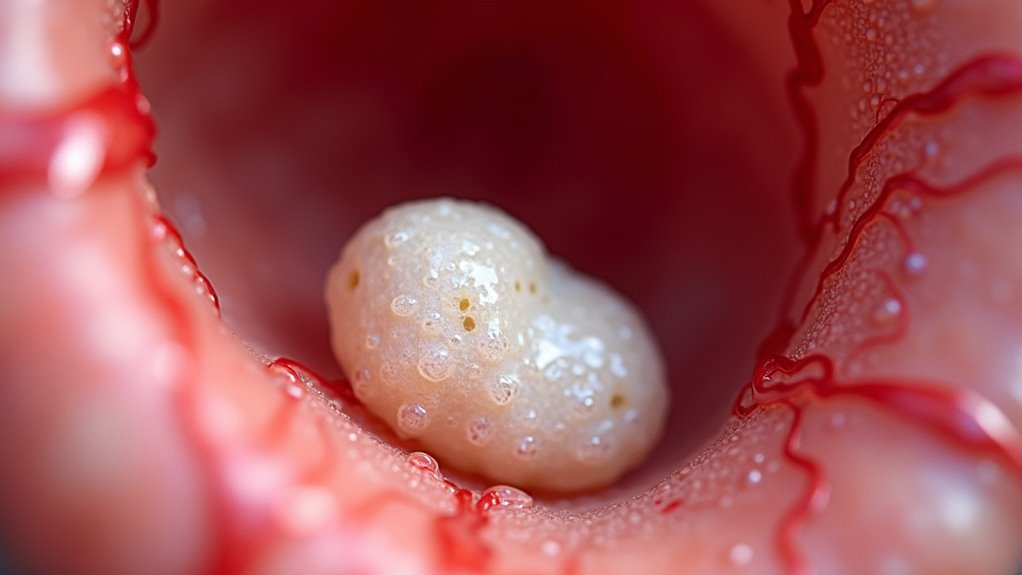Tonsil Stones. Here’s How They’re Ruining Your Breath!
If you’ve noticed a persistent bad breath that won’t go away despite brushing and flossing, you might have tonsil stones lurking in your throat. These small, whitish deposits can silently sabotage your confidence and social interactions while hiding in plain sight. Understanding how these pesky formations develop and why they’re causing your halitosis is the first step to finally tackling this frustrating oral health issue.
What Are Tonsil Stones and Why Do They Form?
Tonsil stones, also known as tonsilloliths, are small, white or yellowish deposits that form in the pockets of your tonsils.
These buildups occur when debris, including dead cells, bacteria, and food particles, become trapped in the tiny crevices of your tonsil tissue.
When this debris accumulates, it calcifies and hardens into stone-like formations. Your tonsils’ natural defense mechanism inadvertently creates an environment where bacteria can thrive, leading to tonsil stones and bad breath.
The presence of anaerobic bacteria, which flourish without oxygen, break down proteins in the trapped material, releasing sulfur compounds that cause the characteristic foul odor.
You’re more likely to develop tonsil stones if you have large or cryptic tonsils with deep pockets.
Other contributing factors include poor oral hygiene, chronic sinus issues, and persistent post-nasal drip.
While they’re generally harmless, these formations can cause considerable discomfort and significant breath problems.
The Connection Between Tonsil Stones and Bad Breath
While many factors can contribute to bad breath, the presence of tonsil stones often creates a particularly stubborn and unpleasant odor. These small calcified deposits release sulfur compounds as bacteria break down trapped debris, leading to halitosis that’s difficult to eliminate through regular oral hygiene alone.
| Compound Type | Odor Description | Impact Level |
|---|---|---|
| Hydrogen Sulfide | Rotten eggs | Severe |
| Methyl Mercaptan | Decay | Moderate |
| Dimethyl Sulfide | Cabbage-like | Mild |
| Butyric Acid | Rancid butter | Severe |
You’ll notice the smell intensifies when you press on your tonsils or when stones become dislodged. Since these deposits form deep within tonsillar crypts, traditional brushing and mouthwash provide only temporary relief. The persistent bad breath often serves as the first indicator that you’re dealing with tonsil stones, even before you spot the white or yellow formations in your throat.
Natural Ways to Remove and Prevent Tonsil Stones
Fortunately, you can address those pesky tonsil stones and their associated odors through several natural remedies at home.
Try gargling with warm salt water several times daily to help dislodge the stones and reduce inflammation. You’ll find that a mixture of one teaspoon of salt per cup of water works effectively.
Essential oils like tea tree, lemon, or garlic oil can help combat the bacteria causing tonsil stones. Simply add a few drops to warm water and gargle.
You can also try using a water flosser on its lowest setting to gently flush out the stones, or press them out with a cotton swab.
To prevent future formations, stay hydrated and maintain excellent oral hygiene.
Consider using an alkaline diet rich in leafy greens and probiotics to reduce bacterial growth.
Oil pulling with coconut oil for 15 minutes each morning can also help eliminate harmful bacteria and prevent stone formation.





